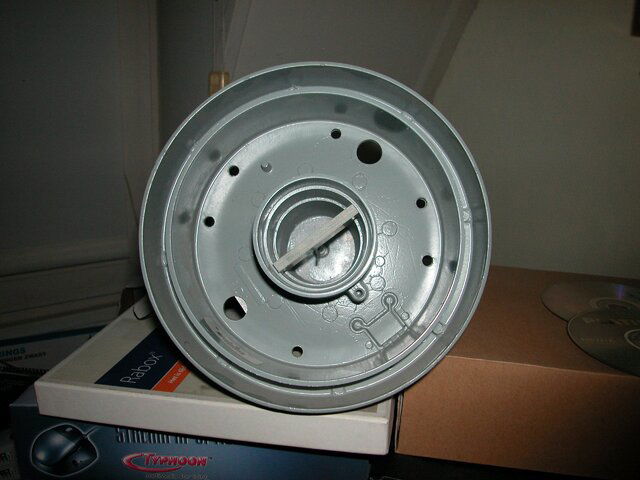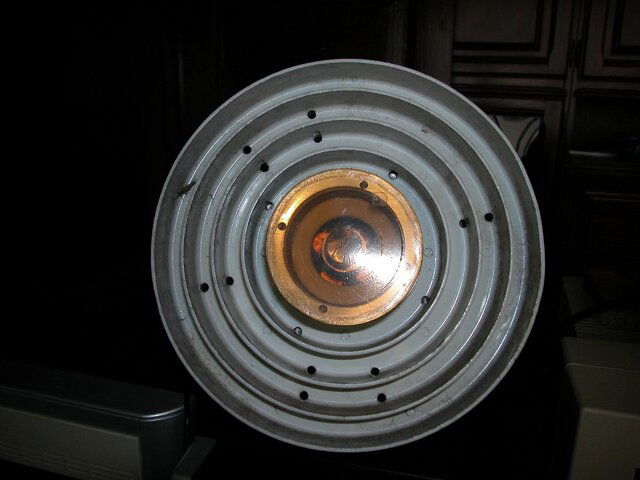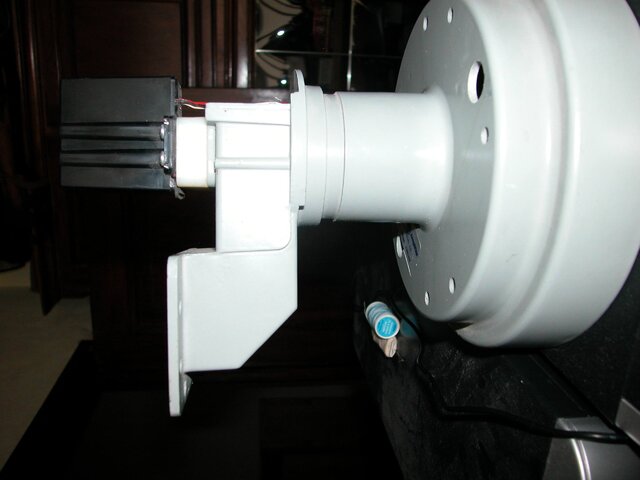Dear folks,
I'm having big problems getting my C-band reception streightened out. More of that later in some other thread. But my first question refers to a brand new feed that has been laying around in my shack for ages. It's the CF-50 feedhorn made by California Amplifier (or at least sold by them under that name). I can't find any information about it, but it has two peculiarities:
1. A much bigger diameter: the outer scalar ring of a chapparal feed is the smallest of the only two rings of the CA. There's one more ring but spaced outside of this other one. It throws therefore a much bigger shadow over the dish which at the time was a reason for me not to pursue the matter as far as I remember. Both inner rings that are normal for Chapparal and other C-Band feeds are lacking so you see a very empty space between feedhole and first ring. (Let me know if you require a photograph).
2. Equally unusual is the fact that in the semi-trapeze-formed piece that all C-band feeds have in order to put the LNB lenghtwise under the hood of the dish lacks the typical little pin that I assule has some function to transport the signal towards the LNB opening.
Which also brings me to the question if there is any advantage to leave that peace off a feed (I have a rather flat Gardiner 25 degrees K LNB which would easily fit without bending the signal lengthwise. But I never saw a system without that extra piece, perhaps it does have a function???
btw: I remember reading somewhere that such a bigger scalar ring thingy would reduce terrestrial interference. But then why no inner rings?
I'm having big problems getting my C-band reception streightened out. More of that later in some other thread. But my first question refers to a brand new feed that has been laying around in my shack for ages. It's the CF-50 feedhorn made by California Amplifier (or at least sold by them under that name). I can't find any information about it, but it has two peculiarities:
1. A much bigger diameter: the outer scalar ring of a chapparal feed is the smallest of the only two rings of the CA. There's one more ring but spaced outside of this other one. It throws therefore a much bigger shadow over the dish which at the time was a reason for me not to pursue the matter as far as I remember. Both inner rings that are normal for Chapparal and other C-Band feeds are lacking so you see a very empty space between feedhole and first ring. (Let me know if you require a photograph).
2. Equally unusual is the fact that in the semi-trapeze-formed piece that all C-band feeds have in order to put the LNB lenghtwise under the hood of the dish lacks the typical little pin that I assule has some function to transport the signal towards the LNB opening.
Which also brings me to the question if there is any advantage to leave that peace off a feed (I have a rather flat Gardiner 25 degrees K LNB which would easily fit without bending the signal lengthwise. But I never saw a system without that extra piece, perhaps it does have a function???
btw: I remember reading somewhere that such a bigger scalar ring thingy would reduce terrestrial interference. But then why no inner rings?





